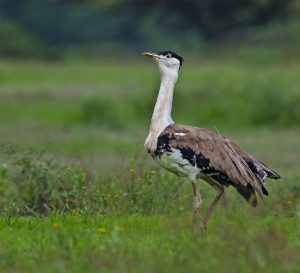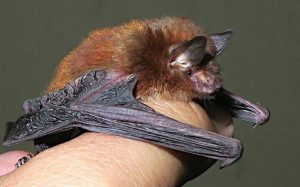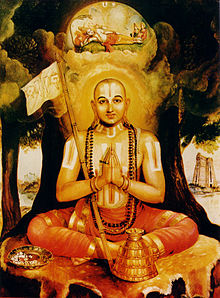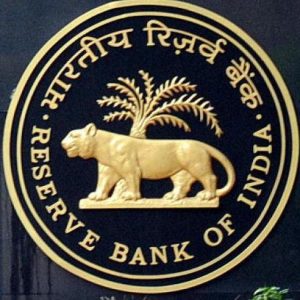Today Current Affairs: 19th April 2021 for UPSC IAS exams, State PSC exams, SSC CGL, State SSC, RRB, Railways, Banking Exam & IBPS, etc
Table of Contents
Two Great Indian Bustards Shot In Pakistan:

A group of hunters shot down two Great Indian Bustards (GIBs) in a protected area of southern Punjab’s Cholistan in Pakistan.
- The Great Indian Bustard (GIB), the State bird of Rajasthan, is considered India’s most critically endangered bird.
- It is considered the flagship grassland species, representing the health of the grassland ecology.
- Its population is confined mostly to Rajasthan and Gujarat. Small populations occur in Maharashtra, Karnataka and Andhra Pradesh.
- The bird is under constant threats due to collision/electrocution with power transmission lines, hunting (still prevalent in Pakistan), habitat loss and alteration as a result of widespread agricultural expansion, etc.
Protection Status:
- International Union for Conservation of Nature Red List: Critically Endangered
- Convention on International Trade in Endangered Species of Wild Fauna and Flora (CITES): Appendix1
- Convention on Migratory Species (CMS): Appendix I
- Wildlife (Protection) Act, 1972: Schedule 1
India’s Concerns:
- The grassland habitat in the Cholistan desert, where the GIBs were killed, is very similar to the habitat in Rajasthan’s Desert National Park (DNP), where the GIB’s last remnant wild population is found.
- DNP is situated near the towns of Jaisalmer and Barmer, forming a part of the mighty Thar desert.
- It was declared as a National Park in 1981 to protect the habitat of the Great Indian Bustard.
- As Rajasthan shares the international border with Pakistan’s Sindh and Punjab provinces, the birds will become an easy prey for the gun-toting poachers there.
- The hunting of the rare bird will not only drastically reduce India’s GIB population, but will also affect the desert ecosystem.
- It is kept under the species recovery programme under the Integrated Development of Wildlife Habitats of the Ministry of Environment, Forests and Climate Change (MoEFCC).
- The MoEFCC has also launched a program called ‘Habitat Improvement and Conservation Breeding of Great Indian Bustard
- The objective of the programme is to build up a captive population of Great Indian Bustards and to release the chicks in the wild for increasing the population.
- Rajasthan government has launched ‘Project Great Indian Bustard’ with an aim of constructing breeding enclosures for the species and developing infrastructure to reduce human pressure on its habitats.
India’s First Bamboo-Dwelling Bat:

Meghalaya has yielded India’s first bamboo-dwelling bat with sticky discs, taking the species count of the flying mammal in the country to 130.
- The disc-footed bat (Eudiscopus denticulus) was recorded in the north-eastern State’s Lailad area near the Nongkhyllem Wildlife Sanctuary, about 1,000 km west of its nearest known habitat in Myanmar.
- There are a couple of other bamboo-dwelling bats in India.
- But the extent of adaptation for bamboo habitat in this species is not seen in the others.
- The flattened skull and sticky pads enabled the bats to roost inside cramped spaces, clinging to smooth surfaces such as bamboo internodes.
- The disc-footed bat was also found to be genetically very different from all other known bats bearing disc-like pads.
- Scientists analyzed the very high-frequency echolocation calls of the disc-footed bat, which was suitable for orientation in a cluttered environment such as inside bamboo groves.
- The disc-footed bat has raised Meghalaya’s bat count to 66, the most for any State in India.
- It has also helped add a genus and species to the bat fauna of India.
International Day For Monuments And Sites:

Every year, the United Nations marks April 18 as the International Day for Monuments and Sites, in many countries also celebrated as World Heritage Day. The theme for this year is “Complex Pasts: Diverse Futures”.
- Globally, the day is promoted by the International Council on Monuments and Sites (ICOMOS).
- ICOMOS in 1982 had decided to celebrate April 18 as the International Day for Monuments and Sites or World Heritage Day.
- Approved by UNESCO in 1983 during its 22nd General Conference, the day is dedicated to recognizing sites of historical importance, raising awareness regarding them, and stressing the need to restore and preserve them.
World Heritage Sites in India:
- Currently, there are 38 World Heritage Sites located in India.
- Of these, 30 are ‘cultural’, such as the Ajanta Caves, Fatehpur Sikri, Hampi monuments, and the Mountain Railways of India, and 7 are ‘Natural’, including Kaziranga, Manas, and Nanda Devi National Parks.
- One is classified as ‘Mixed’, the Khangchendzonga National Park.
- In 2019, ‘Jaipur City’ became the 38th addition to the India list under Culture.
Sri Ramanujacharya:

The 1004th birth anniversary of Sri Ramanujacharya was observed on April 18, 2021.
About Sri Ramanujacharya:
- Born in 1017 CE in Tamil Nadu.
- He is the most respected Acharya in the philosophy of Sri Vaishnavism.
- He was also referred to as Ilaya Perumal which means the radiant one.
- His philosophical foundations for devotionalism were influential to the Bhakti movement.
- He wrote influential texts, such as bhāsya on the Brahma Sutras and the Bhagavad Gita, all in Sanskrit.
Uniform Civil Code (UCC) In Goa:

Chief Justice of India S A Bobde recently appreciated the uniform civil code (UCC) in Goa, the only state to have one.
- The CJI urged intellectuals to seriously study the Goa UCC.
About Goa’s UCC:
- Goa’s Portuguese Civil Code, 1867 is basically an alien code given by the Portuguese.
- Goa’s Civil Code has four parts, dealing with civil capacity, acquisition of rights, right to property, and the breach of rights and remedies.
- It begins in the name of God and Dom Luis, King of Portugal and Algarves.
- The Code has survived by virtue of Section 5(1) of the Goa, Daman and Diu Administration Act, 1962 that permitted its continuance.
- Article 44 of the Constitution says that there should be a Uniform Civil Code. According to this article, “The State shall endeavor to secure for the citizens a uniform civil code throughout the territory of India”. Since the Directive Principles are only guidelines, it is not mandatory to use them.
National Climate Vulnerability Assessment:

National climate vulnerability assessment released. The report is titled ‘Climate Vulnerability Assessment for Adaptation Planning in India Using a Common Framework’.
- It identifies the most vulnerable states and districts in India with respect to current climate risk and key drivers of vulnerability.
Key findings of the report:
- It has identified Jharkhand, Mizoram, Orissa, Chhattisgarh, Assam, Bihar, Arunachal Pradesh, and West Bengal as states highly vulnerable to climate change.
- These states, mostly in the eastern part of the country, require prioritization of adaptation interventions.
Need for vulnerability assessment:
- Mapping the parts of India that are vulnerable to extreme changes will help to initiate climate actions at the ground level.
- The assessment will help Policymakers in initiating appropriate climate actions.
- It will also benefit climate-vulnerable communities across India through the development of better-designed climate change adaptation projects.
- The assessments can further be used for India’s reporting on the Nationally Determined Contributions under the Paris Agreement.
- And finally, these assessments will support India’s National Action Plan on Climate Change.
On-Tap Licences To Set Up Universal Banks And Small Finance Banks:

Eight institutions and individuals have applied for on-tap licences to set up universal banks and small finance banks, the Reserve Bank of India (RBI) said.
- This comes weeks after RBI set up an advisory panel, led by former deputy governor Shyamala Gopinath, to evaluate applications for universal and small finance banks, which are mandated to focus on priority sector lending and small loans.
- The last time RBI handed out universal bank licences was in 2015 when it cleared IDFC Ltd and Bandhan Financial’s applications.
- In August 2016, RBI released guidelines for on-tap licensing for universal banks.
- Among eligible promoters for banks were resident professionals who have 10 years of experience in banking and finance at a senior level.
- Private sector entities owned and controlled by residents and have a successful track record for at least 10 years are also eligible, provided they have assets of ₹5,000 crores or more, and the non-financial business of the group does not account for 40% or more of total assets or gross income.
Existing non-banking financial companies (NBFCs) controlled by residents and with a successful track record for at least 10 years were also allowed to apply for licences.
Hot Springs & Gogra Post:

During the 11th round of discussions between the senior military commanders of India and China to resolve the standoff in eastern Ladakh, China refused to vacate two of the four original friction points.
- At two friction points, Patrolling Point 15 (PP15) in Hot Springs, and PP17A near Gogra Post, China still has a platoon-level strength each, along with vehicles.
- Other two are the Galwan valley and the Depsang plains.
Patrolling Point 15 and 17A:
- Along the Line of Actual Control (LAC) between India and China, Indian Army has been given certain locations that its troops have access to patrol the area under its control.
- These points are known as patrolling points, or PPs, and are decided by the China Study Group (CSG).
- CSG was set-up in 1976, when Indira Gandhi was the prime minister, and is the apex decision-making body on China.
- Barring certain areas, like Depsang Plains, these patrolling points are on the LAC, and troops access these points to assert their control over the territory.
- It is an important exercise since the boundary between India and China is not yet officially demarcated.
- LAC is the demarcation that separates Indian-controlled territory from Chinese-controlled territory.
- PP15 and PP17A are two of the 65 patrolling points in Ladakh along the LAC.
- Both these points are in an area where India and China largely agree on the alignment of the LAC.
- PP15 is located in an area known as the Hot Springs, while PP17A is near an area called the Gogra post.
Location of Hot Springs and Gogra Post:
- Hot Springs is just north of the Chang Chenmo river and Gogra Post is east of the point where the river takes a hairpin bend coming southeast from Galwan Valley and turning southwest.
- The area is north of the Karakoram Range of mountains, which lies north of the Pangong Tso lake, and south east of Galwan Valley.
Importance:
- The area lies close to Kongka Pass, one of the main passes, which, according to China marks the boundary between India and China.
- India’s claim of the international boundary lies significantly east, as it includes the entire Aksai Chin area as well.
- Hot Springs and Gogra Post are close to the boundary between two of the most historically disturbed provinces (Xinjiang and Tibet) of China.
Pangong Tso lake:
- Pangong Lake is located in the Union Territory of Ladakh.
- It is situated at a height of almost 4,350m and is the world’s highest saltwater lake.
- Extending to almost 160km, one-third of the Pangong Lake lies in India and the other two-thirds in China.
Galwan Valley:
- The valley refers to the land that sits between steep mountains that buffet the Galwan River.
- The river has its source in Aksai Chin, on China’s side of the LAC, and it flows from the east to Ladakh, where it meets the Shyok river on India’s side of the LAC.
- The valley is strategically located between Ladakh in the west and Aksai Chin in the east, which is currently controlled by China as part of its Xinjiang Uyghur Autonomous Region.
Aditya-L1 Mission:

ARIES facility (Aryabhata Research Institute for Observational Sciences) will host the support center for Aditya-L1 mission, which is due to be launched next year (2022).
- ARIES is an autonomous institute under the Department of Science & Technology and is located in Nainital (Uttarakhand).
About Aditya-L1 Mission:
- It is India’s first scientific expedition to study the Sun. It will be ISRO’s(Indian Space Research Organisation) second space-based astronomy mission after AstroSat, which was launched in 2015.
- ISRO categorises Aditya L1 as a 400 kg-class satellite that will be launched using the Polar Satellite Launch Vehicle (PSLV) in XL configuration.
- It will be inserted in a halo orbit around the L1 ( Lagrangian point 1), which is 1.5 million km from the Earth.
- The space-based observatory will have seven payloads (instruments) on board to study the Sun’s corona, solar emissions, solar winds and flares, and Coronal Mass Ejections (CMEs), and will carry out round-the-clock imaging of the Sun.
Aditya-L1 Support Centre (ASC):
- The main aim of this center is to let every researcher in India perform analysis over scientific data obtained from Aditya-L1.
- It will expand the visibility of Aditya-L1 beyond India at the international level.
- It will host a compendium of the location and duration of different features on the solar surface such as coronal holes, prominences, flares, CMEs, and sunspots.
- Continuous monitoring of the location and duration of these features will help in monitoring the Earth-directed CMEs and thereby, the space weather.




